Past Presidents
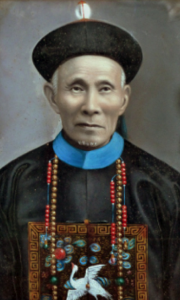 Louey O’Hoy (雷道海 Cantonese: Leui Dou Hoi, Mandarin: Léi Dàohăi, c.1832 – 1920)
Louey O’Hoy (雷道海 Cantonese: Leui Dou Hoi, Mandarin: Léi Dàohăi, c.1832 – 1920)
Founder of Bendigo’s O’Hoy family, which has played a prominent role in the community since the nineteenth century. O’Hoy was a born in Sun Ning (later Toishan), most likely in the village of Wah Lock Lea. After arriving in Bendigo Louey O’Hoy established himself as a merchant and storekeeper, his main shop and residence being in Bridge Street, trading under the name of ‘Ack Goon’ (德源 Cantonese: Dak Yun, Mandarin: Dé Yuán). O’Hoy became a prominent figure in the local community, and was one of leaders of the Chinese Easter Fair committee when it raised money in 1881 from over 800 members of Bendigo and Echuca’s Chinese populations to buy and import the first consignment of parade costumes from China for use in the annual procession. In 1887 O’Hoy, along with herbalist James Lamsey, played host to the Chinese Imperial Commissioners during their visit to Bendigo. It is likely that this was how Louey O’Hoy came to obtain his status as a mandarin of the fifth rank, as this honour was also awarded to prominent Chinese in Sydney and Melbourne who had assisted the commissioners during their tour of Australia. This was equivalent to receiving a British knighthood.
Following the death of Lamsey in 1912 O’Hoy seems to have become the undisputed senior figure amongst Bendigo’s Chinese residents. He was president of the Bendigo Chinese Association when its newly refurbished rooms in Bridge Street were officially opened by the Chinese Consul-General in February 1915, and maintained that position until his departure for Hong Kong in 1918. Louey O’Hoy passed away in late 1920 and was buried in Aberdeen (Hong Kong) Cemetery.

Louey Yin (雷家讓 Cantonese: Louey Ga Yeung, Mandarin: Léi Jiāràng, 1874-1931)
Louey Yin was born in Toishan, the son of Louey Ack (d.1892). He worked as a storekeeper and market gardener, and though based in Bendigo he was involved with gardens in Echuca, where he also practiced as a herbalist. His granddaughter later recalled that he had one of the first Ford cars in Bendigo, a necessity given his constant travelling. Louey Yin was a prominent leader of the Chinese community, being a sometime president of the (Chinese) Easter Fair Committee, as well as a leading figure of the Chinese Masonic Society in Bridge Street.

Que Lan O’Hoy (雷學燊 Cantonese: Louey Hock Sam, Mandarin: Léi Xuéshēn, alias 新德原 Sun Ack Goon, Cantonese: San Dak Yun, Mandarin Xīn Dé Yuán, c.1874-1964)
Que O’Hoy was born in Sun Ning (later Toishan) county in China’s Guangdong Province to Bendigo storekeeper Louey O’Hoy. Que joined his father in Bendigo in 1894, and within ten years had taken over ownership of the Bridge Street store Sun Ack Goon, which he would continue to run until his death in 1964. He married Poon Suey Gook (潘瑞玉) with whom he had a large family who were born both in China and Bendigo – the strictures of the White Australia Policy were to place great strain upon them over the decades. In 1960 Que O’Hoy became an Australian citizen, an indication of the then impending demise of the discriminatory policies which had brought so much uncertainty into his family’s lives, and a tribute to his perseverance as a Chinese-Australian who had lived through some of the worst periods of official discrimination.
Like his father Louey O’Hoy, Que became a prominent figure within the Bendigo (and Australian) Chinese community. As president of the Bendigo Chinese Association in the 1920s he arranged for the dragon Loong to appear at carnivals in Adelaide, Echuca, and Melbourne, making a contribution to hospital charities across the country. Along with his brother Fee (who was then BCA Secretary), Que also presided over the BCA’s restoration of the Chinese Cemetery at Vaughan in 1929. Que seems to have remained in the post of BCA president for most of the time from his father’s departure to Hong Kong in 1918 until his death in 1964.
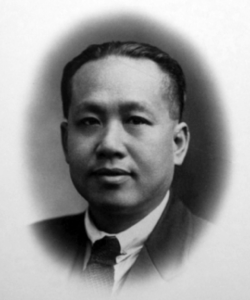
James Pang (alias James Yin Kee, c.1886-1944)
Prominent herbalist who was the successor to Louey Yin Kee at the latter’s Hargreaves Street practice – he continued to use his predecessor’s well established name, and following the convention of the times adopted ‘Yin Kee’ as a personal as well as a business name. Pang was born in Canton, and is known to have had a wife and family there before coming to Australia. In Bendigo he married twice into local Australian-Chinese families, firstly to Myrtle Lee, and then after her death to Nellie Ah Dore.
In the late 1930s James Pang was named in newspaper reports as being the leader of Bendigo’s Chinese Association, it is unknown though for how long he held this position. Pang passed away in 1944, and was interred at the Bendigo Cemetery.
 Jan O’Hoy BEM (雷維森 Cantonese: Louey Waisam Mandarin: Léi Wéisēn 1913-1980) Jan was born 24 February 1913 in the village of Wahlock (和樂 Mandarin: Hélè) in the Toishan district to Bendigo storekeeper Que O’Hoy and his wife Poon Suey Gook. Jan O’Hoy arrived in Australia on a student passport on 30 July 1923. Receiving both a standard Western and a traditional Chinese education, Jan was well placed to be an interpreter (both literally and figuratively) between the two cultures. Jan O’Hoy became Secretary of the Bendigo Chinese Association when he was in his early twenties, a position which he retained until his father’s death in 1964. Jan can be given much of the credit for the survival of the Chinese contribution to the Easter Parade as community numbers declined dramatically due to the strictures of the White Australia Policy. In the late 1960s he oversaw the restructuring and revival of the Bendigo Chinese Association itself, becoming joint-president with Allan Chan in 1969 at a time when Bendigo businessmen and BCA members were organizing the making of a new dragon (with accompanying regalia) in Hong Kong. Jan O’Hoy remained a popular and prominent figure in Bendigo until his death in 1980.
Jan O’Hoy BEM (雷維森 Cantonese: Louey Waisam Mandarin: Léi Wéisēn 1913-1980) Jan was born 24 February 1913 in the village of Wahlock (和樂 Mandarin: Hélè) in the Toishan district to Bendigo storekeeper Que O’Hoy and his wife Poon Suey Gook. Jan O’Hoy arrived in Australia on a student passport on 30 July 1923. Receiving both a standard Western and a traditional Chinese education, Jan was well placed to be an interpreter (both literally and figuratively) between the two cultures. Jan O’Hoy became Secretary of the Bendigo Chinese Association when he was in his early twenties, a position which he retained until his father’s death in 1964. Jan can be given much of the credit for the survival of the Chinese contribution to the Easter Parade as community numbers declined dramatically due to the strictures of the White Australia Policy. In the late 1960s he oversaw the restructuring and revival of the Bendigo Chinese Association itself, becoming joint-president with Allan Chan in 1969 at a time when Bendigo businessmen and BCA members were organizing the making of a new dragon (with accompanying regalia) in Hong Kong. Jan O’Hoy remained a popular and prominent figure in Bendigo until his death in 1980.
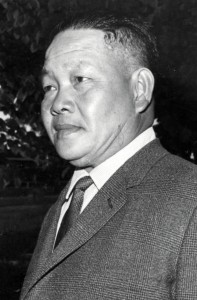 Allan Yee Chan (1914-1990) Allan Chan was born at Rangoon in Burma in 1914 to Chinese immigrant parents. His family afterwards relocated back to their ancestral district of Toi Shan in southern China’s Guangdong province, and it was there that Chan grew up. Allan Chan came to Australia during the war years, working in mines in northern Australia before shifting to Melbourne where he worked as a restaurant cook. Upon arriving in Bendigo in 1948 Chan took over Peter Louey Mow’s restaurant in Mitchell Street, renaming it the Toi Shan Café. He later sold the café to brother Victor, choosing to concentrate on his other business venture in Bendigo, the Sandhurst Stone Crushing works in Chum Street. Allan also was a leading figure in Bendigo’s Chinese community, serving as joint-president of the Bendigo Chinese Association from 1969-73, then as president from 1973-75. During this time Chan oversaw, along with joint-president Jan O’Hoy, the revival of the BCA’s contribution to the Easter procession which was marked by the commissioning of new dragon Sun Loong and processional regalia from the workshop of Hong Kong’s Lo On Kee. Allan Chan married Bendigo born Gladys Lee, who had previously worked as a waitress for Peter Mow before Allan bought the Mitchell Street café. Together they raised a family of six children. Allan passed away on 14 December 1990, aged 76. He was buried at the Bendigo Cemetery.
Allan Yee Chan (1914-1990) Allan Chan was born at Rangoon in Burma in 1914 to Chinese immigrant parents. His family afterwards relocated back to their ancestral district of Toi Shan in southern China’s Guangdong province, and it was there that Chan grew up. Allan Chan came to Australia during the war years, working in mines in northern Australia before shifting to Melbourne where he worked as a restaurant cook. Upon arriving in Bendigo in 1948 Chan took over Peter Louey Mow’s restaurant in Mitchell Street, renaming it the Toi Shan Café. He later sold the café to brother Victor, choosing to concentrate on his other business venture in Bendigo, the Sandhurst Stone Crushing works in Chum Street. Allan also was a leading figure in Bendigo’s Chinese community, serving as joint-president of the Bendigo Chinese Association from 1969-73, then as president from 1973-75. During this time Chan oversaw, along with joint-president Jan O’Hoy, the revival of the BCA’s contribution to the Easter procession which was marked by the commissioning of new dragon Sun Loong and processional regalia from the workshop of Hong Kong’s Lo On Kee. Allan Chan married Bendigo born Gladys Lee, who had previously worked as a waitress for Peter Mow before Allan bought the Mitchell Street café. Together they raised a family of six children. Allan passed away on 14 December 1990, aged 76. He was buried at the Bendigo Cemetery.
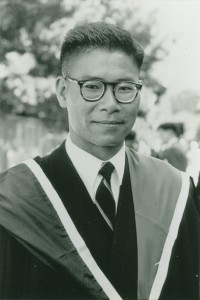 Yeung Cho Ming MBBS FRACS (楊祖銘 Mandarin: Yáng Zŭmíng, d.1992)
Yeung Cho Ming MBBS FRACS (楊祖銘 Mandarin: Yáng Zŭmíng, d.1992)
Yeung Cho Ming was born in mainland China, the eldest son of Yeung Yuk Chee and Lau Yuk Yu. He left his homeland in the early 1950s to escape the communist takeover of the country. Yeung graduated in medicine from Melbourne University in 1956, and from 1968 worked at the Bendigo Base Hospital, where he was appointed consultant surgeon in 1970. Described as ‘a very private, but courteous and generous individual’, he nevertheless took a leading role in his profession as the president of the Bendigo Australian Medical Association branch, as well as serving as president of the Bendigo Chinese Association from 1976 to 1980. With the construction of the Golden Dragon Museum in 1991 the library that was established on the second floor of the old Chinese Association building was named in his honour. Since 2012 an ancestral memorial plaque commemorating the life of Yeung’s grandfather Yeung Suy-Won (1849-1929), which was donated by a Hong Kong relative, has hung in the museum’s Loong Gallery. Yeung Cho Ming passed away in November 1992 and was buried at Kangaroo Flat Cemetery. He was survived by his wife Carlyn.
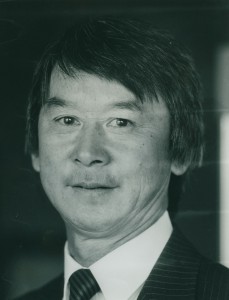 Russell Goldfield Jack AM (雷揚名 Louey Young Man, Cantonese: Leui Yeung Ming, Mandarin: Léi Yángmíng, 1935-) Russell Jack was born in 1935 to Long Gully herbalist Harry Louey Jack and his wife Gladys (nee Ah Dore). Russell showed great sporting talent in his younger years, competing at a high level in athletics, as well as being involved in sports as diverse as Australian rules football and baseball. He also put his physical prowess to good use during the annual Easter Parade, when he and his four brothers used to carry the head of the dragon in shifts throughout the procession. Russell also began to emerge as a leader within Bendigo’s Chinese community, becoming treasurer of the BCA in the 1970s, then succeeding Yeung Cho Ming as president in 1980. He was to occupy that position until he retired in 2012 – Russell though is still active in the association and Golden Dragon Museum. It was under Russell Jack’s leadership that the construction of the museum in Bridge Street to house and display the association’s collection was planned, funded, and then finally brought to completion in early 1991. From its inception Russell has served as the Golden Dragon Museum’s Director. For his work in preserving Bendigo’s Chinese heritage Russell was made a Member of the Order of Australia in the 1993 Queen’s Birthday honours list. Russell married Joan Clarke in 1958, and together they had two children David and Anita. Russell and Joan Jack were also a partnership in the preservation and promotion of local Chinese history and culture, with Joan serving as the museum’s curator until her passing in 2006.
Russell Goldfield Jack AM (雷揚名 Louey Young Man, Cantonese: Leui Yeung Ming, Mandarin: Léi Yángmíng, 1935-) Russell Jack was born in 1935 to Long Gully herbalist Harry Louey Jack and his wife Gladys (nee Ah Dore). Russell showed great sporting talent in his younger years, competing at a high level in athletics, as well as being involved in sports as diverse as Australian rules football and baseball. He also put his physical prowess to good use during the annual Easter Parade, when he and his four brothers used to carry the head of the dragon in shifts throughout the procession. Russell also began to emerge as a leader within Bendigo’s Chinese community, becoming treasurer of the BCA in the 1970s, then succeeding Yeung Cho Ming as president in 1980. He was to occupy that position until he retired in 2012 – Russell though is still active in the association and Golden Dragon Museum. It was under Russell Jack’s leadership that the construction of the museum in Bridge Street to house and display the association’s collection was planned, funded, and then finally brought to completion in early 1991. From its inception Russell has served as the Golden Dragon Museum’s Director. For his work in preserving Bendigo’s Chinese heritage Russell was made a Member of the Order of Australia in the 1993 Queen’s Birthday honours list. Russell married Joan Clarke in 1958, and together they had two children David and Anita. Russell and Joan Jack were also a partnership in the preservation and promotion of local Chinese history and culture, with Joan serving as the museum’s curator until her passing in 2006.
© Use of Museum Photos
The BCA thanks Leigh McKinnon Research Officer of the Golden Dragon Museum for compiling the above information.
The Courtesy of Golden Dragon Museum / Bendigo Chinese Association Photographic archives.
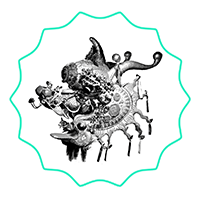






 Allan Yee Chan
Allan Yee Chan  Yeung Cho Ming MBBS FRACS
Yeung Cho Ming MBBS FRACS  Russell Goldfield Jack AM
Russell Goldfield Jack AM